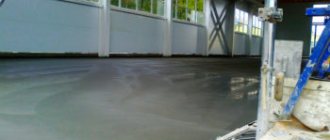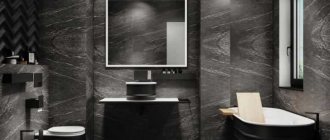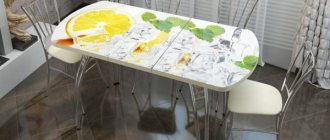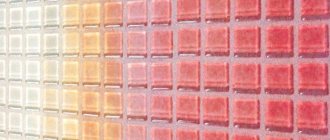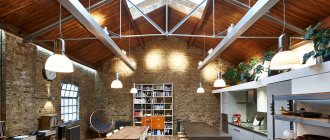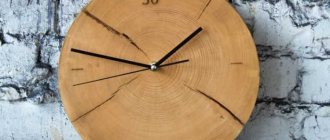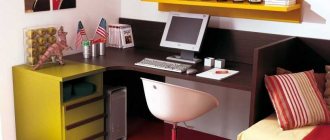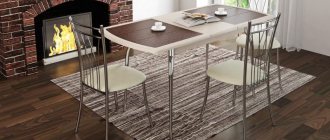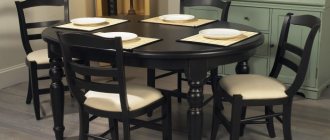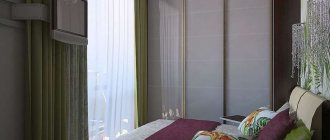SHARE ON SOCIAL NETWORKS
FacebookTwitterOkGoogle+PinterestVk
Many people today strive for original interior design. Purchasing custom-made products is expensive, and creating an interesting interior from standard models is quite difficult. Affordable manufacturing technology, good performance qualities and the possibility of decoration make it possible to use polymers when creating interior elements. An epoxy resin table is the most popular option.
Thanks to its properties, epoxy resin allows you to create surfaces that do not crack, deform or scratch
Using epoxy resin as a table covering
The surface of any table has certain requirements. This is an area that, during use, is subject to constant mechanical influences: indentations, impacts, wiping, cuts. Therefore, the top layer must be durable. Being an interior item, the table must also meet aesthetic requirements.
Among the disadvantages of epoxy resin, the following should be highlighted: high cost, instability to low temperatures, toxicity at high temperatures
Epoxy resin, due to its properties, allows you to create surfaces that cannot be scratched, chipped, they do not crack or deform. Poured tables made of epoxy resin are easy to decorate. You can give the fill the desired color, shape, or add elements from natural materials or other object details.
The main operational advantages of the material include the following:
- resistance to mechanical damage;
- moisture resistance;
- non-exposure to ultraviolet radiation;
- immunity to aggressive detergents and cleaning agents, therefore easy to maintain;
- high aesthetic qualities.
Among the shortcomings of the material, it is worth noting the following:
- high cost of material;
- the need to strictly follow the application technology (even with the slightest deviation the result may be unsatisfactory);
- instability to low temperatures (white flakes appear in the hardened composition);
- toxicity when exposed to high temperatures. (However, exposure to such during use in home and office environments is excluded).
The frequent use of epoxy resin for filling countertops is also due to the fact that it gives a perfectly flat surface
The active use of epoxy resin for filling countertops is also explained by the fact that it provides a smooth surface that does not require correction.
Tables with epoxy resin: types of models
The amount of resin used during the manufacture of tables may vary. Some options only require filling the depressions, that is, creating a thin top layer. With large uneven areas and the use of untreated wood materials as a frame, consumption increases significantly. It is possible to use only epoxy composition for countertops.
The price of tables made of epoxy resin directly depends on the quantitative indicators and shape. During practical manufacturing, three types of products are distinguished:
- Made only of resin, without the presence of support. These are small tables that can be used as coffee tables, dressing tables or decorative ones. Such options are not intended for significant mechanical loads.
- Tables with a base, usually wooden, where an epoxy layer is used as a top coating. Such models are easy to decorate. Painting of the base, elements made of paper and plastic, coins, stones, shells, etc. are used.
- Combined types. The resin layer alternates with fragments of another material (wood is mainly used).
The price of epoxy resin tables directly depends on the size, shape and amount of decor used
When making a table only from resin, a mold with sides is required. To perform the top coating, limiters are installed directly along the edges.
Important! The required amount of epoxy resin and the drying time of the layer depend on the height of the decorative additional parts used.
Combined models can be made either with or without restrictive sides. Their presence is determined by what material is placed along the edges of the tabletop.
Resin for pouring countertops: brands and manufacturers
Epoxy resin is a two-component material. It consists of resin and hardener itself. The performance characteristics of the composition as a whole depend on the characteristics of the latter. The quality indicators provided by the manufacturer are also important.
The composition of epoxy resin includes a hardener, the quantity and characteristics of which determine its performance characteristics.
The most popular brands of epoxy resins for pouring countertops are:
- QTP-1130. Composition of domestic production. More suitable for creating thin transparent surfaces (glass effect).
- "Art-Eco". Domestic material, transparent. In addition to the resin, you can purchase a color scheme from this manufacturer and give the composition the desired color.
- "ED-20". It has a low price. According to user reviews, over time the layer of this epoxy turns yellow.
- Crystal Glass. A feature of the composition is fluidity. Therefore, this brand is convenient to use when decorating a tabletop with a large number of object elements.
- PEO-610KE. Material of the middle price segment. A distinctive feature is that it does not turn yellow even with prolonged exposure to heat and ultraviolet radiation.
When purchasing epoxy resin, you need to pay attention to the expiration date, study the instructions and features of its use.
When purchasing, you must carefully study the instructions and the specified features of using epoxy resin. The table will only be functional and meet expectations when the properties of the composition correspond to the goals set. An important point is also the expiration date. If it is exceeded, the quality of the material can change significantly.
Interesting options for kitchen countertops made of epoxy resin
Epoxy resin is an excellent material for making kitchen countertops. Exposure to moisture and the need for constant maintenance using various detergents are important features of operation. The epoxy surface can withstand such loads, and if manufacturing technology is followed and high-quality materials are used, it retains its aesthetics for a long time.
An interesting option is a tinted glass surface with air bubbles. This tabletop is a worthy interior decoration and is practical. Gloss gives a feeling of radiant purity, freshness of colors, and the presence of bubbles allows you to hide traces of dirt. The kitchen design looks original and neat.
Photos of tables made of epoxy resin on the Internet also show models that imitate broken glass, natural stone, the seabed, and mosaic options. The shapes of countertops can be very diverse: rectangular, square, with the presence of roundness and corner cuts in certain areas.
Epoxy resin is an excellent material for making kitchen countertops
Helpful advice! When choosing a work surface for the kitchen made of epoxy resin, it is better to give preference to products with an object-based decorative addition. In addition to aesthetics, they also perform a reinforcing function, which improves the performance of the countertop.
Table made of slab and epoxy resin: original and presentable
A slab is a cut, a solid wood panel that retains its natural shape and structure. This material allows you to make original tabletops from it, because the cut lines are unique. Epoxy resin fills the pores of wood, forming a reliable bond. The products are durable and beautiful.
Tables made from cut wood and epoxy resin can have different configurations. It is determined primarily by the method of sawing wood. It can be longitudinal or transverse, that is, made vertically or horizontally.
Vertically made blanks are suitable for elongated tabletops. The definition of “rectangular” is not applicable in this case, since natural outlines very rarely have straight lines. Cross cutting produces rounded shapes. Such tables often have small table tops.
A table made of slab and epoxy resin can have a wide variety of configurations and patterns
The presence of cracks, voids from knots, and unevenness form the basis of the decor. Epoxy resin fills the cavities, leveling the surface, giving the product an unusual and aesthetic appearance. Tinting the mixture used provides additional opportunities for creating original decor.
Tables made of slab wood with epoxy resin can have either a flat or three-dimensional tabletop. The original shape can be achieved by horizontal cutting of wood material. To fill such models you need a lot of resin and a high-quality hardener. The costs (both material and physical) are justified by the beautiful appearance of the products.
Recommendations for working with epoxy resin
Working with the material is quite simple. This does not require special skills or professional tools. The main requirement is adherence to technology. However, to prevent frequent mistakes, you should listen to the advice and recommendations of experts:
- Strict adherence to safety regulations.
- Mandatory use of personal protective equipment.
- If a liquid substance gets on the skin, immediately wipe the affected area of the body with alcohol and wash your hands.
- If epoxy accidentally gets into the eyes or mucous membranes, you must seek help from a medical facility.
- It is recommended to cover the surface on which work is carried out with plastic film. Plain paper will not protect the base from negative consequences.
- You should not work in a room with high humidity and air temperature less than +22 ° C, in this case hardening will occur slowly.
- Moisture must not enter either the individual components or the mixture.
- To prevent the hardened resin from turning yellow over time under the influence of sunlight, you can buy a substance that contains a UV filter.
- It should be remembered that under the influence of low temperatures, the hardened material delaminates.
- If mixed unevenly, spots and uncured areas may appear on the finished product after drying.
- If, after leveling, there are still bubbles in the layer of the mixture, then the surface must be slightly warmed up with a construction hairdryer, without stopping for a long time in one place.
How to choose a resin
Different types of epoxy are used for the job. The choice of a particular brand depends on many factors. First of all, the budget allocated for these purposes is taken into account. Parameters such as transparency and hardening period are also important. Depending on the type of table, its thickness, and the presence of decorative elements, a specific composition is chosen. Let's look at a few common options:
- ED-20. The only advantage is low cost. Experienced craftsmen do not recommend using it for furniture production. It has increased viscosity; after hardening, air bubbles are visible on the surface; over time, the transparent appearance is lost, and the substance turns yellow.
- EpoxyMaster. The composition is characterized by low viscosity. Allows you to work with large objects, pour one layer up to 5 cm thick. This variety has good fluidity, self-leveling, and penetrates hard-to-reach places.
- QTP-1130. A transparent material that is suitable for making a desk or coffee table if the thickness of the fill does not exceed 3 mm.
- PEO – 610KE. Under the influence of sunlight and heat it does not lose its transparency.
- Art-Eco. Manufacturers produce a wide range of different colors. Filling is done only in thin layers. However, when exposed to light, a yellowish tint may appear.
- CHS Epoxy 520. One of the most popular types used in the production of tables. Allows you to fill decorative elements, for example, coins, corks, herbariums.
How to cook
From epoxy resin you can make not only a coffee table or desk, but also a kitchen countertop, bar counter, chair, stool, and other pieces of furniture. Having decided on the type of future product and choosing the appropriate brand of chemical, the novice master always has the question of how to make the solution with his own hands.
Typically, epoxy is sold complete with a hardener, which starts the chemical reaction. These two components must be mixed in the correct proportion. Each manufacturer has different parameters, so before starting work you should read the instructions and carry out all actions strictly according to them.
To mix the ingredients you will need two measuring containers. First you need to measure out the resin. If a color is used, it should be added and thoroughly mixed before adding the hardener, preheated to a temperature of +30-35 ° C, but no more, so as not to spoil the mixture.
A hardener is added to the prepared composition in the ratio specified by the manufacturer. The resulting material is slowly and thoroughly mixed until a homogeneous mass is formed. If there are bubbles, carefully blow them out with a hairdryer. It is worth remembering that the finished mixture has a limited shelf life for pouring.
Features of density
One of the important characteristics of a material is its viscosity. Consistency affects the final result. The choice of thickness depends on many parameters, such as the decor used, the type of work performed. For some purposes, liquid compositions are chosen, for others, viscous ones. There are several states of matter, each of which is used for different purposes:
- Liquid. The finished mass flows easily from the stick. The resin spreads well, penetrates into all hard-to-reach places, fills all the depressions, recesses, corners, and impregnates the wood.
- Semi-liquid. The consistency is thicker and more viscous. Used for filling round tabletops, allowing you to create decor if necessary.
- Thick. This mixture is not suitable for pouring. Used for restoration work, for repairing vertical surfaces, as an adhesive.
Some craftsmen, trying to save money, use chemical additives to increase fluidity. For example, when a regular varnish solvent is added to the mixture in a volume of 5% of the total mass, the fluidity increases by 60%, but the strength of the composition decreases by 35%.
A safer way to reduce viscosity is to heat the components. In this case, the components are heated separately at a temperature not exceeding 50 °C. In some cases, on the contrary, it is necessary to make the substance more viscous. For this purpose, special powder fillers are used, for example, wood flour.
Wood and epoxy resin table top for living room
Is an epoxy resin table appropriate for a living room? Of course, but only if it matches the interior as a whole. Yes, and there are some special requirements for the table in the living room. They are as follows:
Epoxy resin tables are often placed in living rooms because their glossy surface helps create a festive atmosphere.
- Quite large sizes. It is supposed to seat at least several people.
- Ergonomic shape. Protrusions that maintain natural lines add originality, but sitting in such a part of the table is uncomfortable.
- The design of the chairs should match the appearance of the table and form a single composition with it. This requirement is aggravated by the fact that such tables are not covered with tablecloths.
Making tables from epoxy resin for living rooms is also acceptable because it can create a glossy surface that helps create a festive atmosphere.
It is better if the table in the living room has straight lines around the perimeter. As decoration, it is appropriate to use a blurred pattern of epoxy inserts, as well as a bright one-color design that harmonizes with other shades in the room or is an interior accent.
The following requirements are imposed on the table in the living room: large size, ergonomic shape, design must match the interior
Ornaments will decorate the living room table in an interesting way. The manufacturing process of such products is somewhat more complicated, since the voids should not have arbitrary, but specific sizes and locations.
Helpful advice! When making tables from epoxy resin for the living room (taking into account their size), you should use a technology using a support or a combined option, and the wooden parts in the second case should occupy a significantly larger area.
The highlight of the room design: an epoxy resin table with lighting
Epoxy resin without additives is an almost amorphous substance. Only additional components make it an excellent creative material. In addition to the ability to change colors and shades, epoxy resin can turn into a luminous material.
Related article:
Dining table for the kitchen: role in the interior and criteria for a successful choice
Material, shape and dimensions of the product. Various options and alternative designs. Compliance of product design with interior style.
Illuminated furniture pieces are appropriate in any interior and rooms with various purposes. The living room table will become bright and festive, an illuminated dressing table will add intimacy to the bedroom environment, a kitchen countertop with luminous end parts will add a lively touch to the everyday functionality of the work area.
Tables made of epoxy resin with lighting will look appropriate in any interior and room
Making tables made of wood and epoxy resin with lighting does not require the use of complex technologies. In addition to the hardener, you must purchase luminescent powder. The desired glow intensity can be achieved by changing the proportion of powder and resin: the more luminescent additive, the brighter the glow.
There should not be an excess of luminous material, it is annoying. Therefore, tabletops with a large illuminated area are appropriate only for infrequent use and to create a special atmosphere. In the interior of living rooms, small lighting is preferable.
Filled shallow cracks, the outer sides of the tabletops, leveled with luminous material, will ensure sufficient decorativeness of the products.
Original and fashionable trend: river table made of epoxy resin
A fairly popular product is a river table made of epoxy resin. The price of the models depends on the quality of the solid wood used, the amount of epoxy material consumed and the manufacturing technology. There are a lot of design options. It can be a narrow river insert, or a wide one, with islands, complemented by decorative object elements. The basis of any composition is the same arrangement of the tabletop parts: wooden inserts along the edges, between which epoxy fill is placed.
River tables made of epoxy resin are especially popular.
The high price often forces you to start making such a table yourself.
When creating a model, you should pay attention to the following points:
- The surface of the boards must be perfectly flat. “Helicopters” will make a product that is not only unaesthetic, but also functionally inconvenient.
- It is necessary to make a test dose when coloring the resin. An unsuccessful color can not only disappoint, but also simply not correspond to the decorative idea.
- When making a river table from epoxy resin with your own hands using decorative parts, it is necessary to fix light elements, otherwise they will float when pouring.
- Any bubbles that form should be removed by piercing them with a needle.
Helpful advice! To avoid problems during the pouring process, it is better to heat the resin before use - it will become more plastic.
The high price of such a product as a river table forces you to start making it yourself
Step-by-step manufacturing technology
When everything is prepared, you can proceed directly to making the table. The step-by-step instructions have several points:
- Preparing the tree. The slabs need to be processed and given the desired shape. If you have one large board, it will need to be broken into two or more pieces. Moreover, the more uneven the edges are, the better. You can use a drill and chisel. Next, the wood needs to be sanded and covered with stain, varnish or other protective compound. If there is bark on the boards, remove or leave it as desired. In the second case, the furniture will look as natural as possible.
- Formwork. It should be slightly larger in size than the future tabletop. It can be made from acrylic or plastic. Another option is formwork made of chipboard or plywood, covered with film inside. It is worth making sure in advance that the film will not stick to the resin. The joints must be sealed with liquid silicone or sealant.
- Preparing for pouring. Coat the edges of the boards that will be in contact with the epoxy with a good layer of resin. This is necessary so that in the future the solution does not penetrate into the pores, and air bubbles from the dry board do not get into it. Give it some time to set.
- Mixing resin. First, a coloring paste is added to the epoxy if necessary, then a hardener. For a better connection, you can use the double mixing method, that is, repeatedly pouring the solution from container to container.
- Filling. Pour the material gradually, making sure that it is evenly distributed throughout the free space. If there are decorative elements in the resin layer, you must first make a base, wait until it sets (wait 2-3 hours), then place the decoration on it and fill it completely. Complete hardening time is at least 24 hours. Then remove the tabletop from the formwork.
- Final processing. If there are uneven spots on the countertop, you need to saw them off. Next, start sanding. You should start with a small-grain belt and finish with a nozzle with 2000-3000 grain. To add gloss, the surface can be treated with polishing paste and then additionally coated with varnish.
- Screwing the foot. Legs can be wooden or metal.
Useful to know > How to make a keychain from wood and epoxy resin, detailed instructions
The river table is ready and can decorate the living room, dining room or kitchen of any apartment or house.
As you can see, making an exclusive item is not so easy. You will need a competent approach, perseverance, and accuracy in your work, then with a high degree of probability you can count on a decent result.
Making a table from epoxy resin with your own hands
You can make other interesting table options with your own hands. It will not be possible to completely copy a product from the Internet, since it is impossible to select absolutely similar wooden blanks, but it is quite possible to use the idea as a whole.
The sequence of actions when making a table with epoxy resin with your own hands can be as follows:
- Preparation of wooden parts. Selecting the material, trimming (if necessary), sanding, making the mold or edges.
- Approximate calculation of epoxy resin to fill the mold or individual fragments, purchase of the composition, including hardener, colors and other additives.
- Laying out wooden parts. They must be positioned strictly horizontally, otherwise sagging may appear on the surface.
- Mixing. Two containers are used: the resin should be poured into one, the hardener should be measured in the other. The composition must be thoroughly mixed, otherwise it will harden for a long time.
Preparing the wooden parts is the first thing you need to start making a table with epoxy resin yourself
Important! Wooden elements must be dried before use. Wet parts may become deformed.
Certain environmental indicators will also help you make your own epoxy resin table aesthetically pleasing. The temperature in the room where the manufacturing process takes place should be maintained at least +22 C°, humidity should be reduced to the lowest possible level.
Polishing and decorating a finished epoxy table
To polish the last layer, you need to take abrasive paper. During operation, care must be taken to ensure that the surface does not heat up. For this purpose, regular water is periodically added.
After thorough sanding, you can begin applying varnish. It is advisable to cover the tabletop with several protective layers. Each one must dry well and go through the sanding process.
How to care for an epoxy resin countertop
Furniture made from epoxy resin is easy to maintain.
The only thing you need to remember:
- contact with hot surfaces is contraindicated;
- aggressive household chemicals “eat up” the glossy shine.
Hand-made furniture pieces add special sophistication and warmth to the interior. And products made from epoxy can even become a family rarity, delighting more than one generation of the master’s family!
Epoxy resin table in a modern interior
A table made with epoxy resin is a bright and expressive element. The more original its design, the more thoughtful the interior of the room should be. For a classic style, rectangular or oval base boards framed with epoxy fill are suitable. It is better to use brown color, perhaps to match the wood.
In the photos of tables made of epoxy resin and wood, presented on the Internet, there are many models with bright red, matte gray, white, and purple fills. They will be quite appropriate in interiors that tend towards eclecticism, in modern and high-tech styles.
Depending on the shape, size and decor, an epoxy resin table can be appropriate in any interior
Illuminated options will decorate any interior. A lot of illuminated table area is suitable for a teenager’s room or living room. Unobtrusive small fragments will promote relaxation and relaxation. They are suitable for bedrooms and other recreational areas.
Countertops with imitation marble are harmonious for dining tables and work surfaces.
The availability of making countertops from epoxy resin with your own hands opens up wide opportunities for implementing the most creative design ideas. The desktop of an IT specialist can be made using computer disks as decoration, the hallway can be originally complemented by a table top with attachments of keys and key rings, the table for tea drinking can be a picture or a map.
Types of countertops
Before you buy a plywood and epoxy resin table or make one yourself, you need to understand the variety of choices. There is nothing worse than being disappointed in your purchase after finding a better option. Although epoxy tables come in a wide range of models, there are not so many varieties of plywood models. The fact is that, despite all the advantages of the material, natural wood or stone is traditionally valued.
Plywood is good for its ease of processing and inexpensive cost, however, the smooth surface of the veneer indicates complex wood processing, while many craftsmen focus on its original appearance (presence of bark, knots, peculiar texture).
The first type of countertop is made from plywood board. As a rule, its thickness is about 2 cm. This plate is quite strong and can withstand loads. But plywood impregnated with epoxy resin looks more preferable as a tabletop. The resin gives additional rigidity to the fibers. Ordinary plywood can be deformed, and if the load continues for a long time, the sheets may not recover their original shape. On the other hand, everyone knows how wood is affected by changes in humidity, and in a kitchen you can’t do without a protective layer for furniture. The function of such protection is precisely performed by epoxy resin.
Impregnation of plywood with epoxy resin is quite labor-intensive work; it represents the main manufacturing process. The difficulty is that impregnation takes a long time. It is necessary to apply a layer of resin and then wait until it is absorbed. The end result is a durable board coated with a thin layer of epoxy. It gives the surface a gloss and protects the wood from scratches or chips.
Useful to know > How to make a watch from epoxy resin, an exclusive craft
Despite the fact that the veneer has a texture, the design can only be partially called beautiful. Therefore, before pouring the finishing layer, the surface is painted. Such countertops are not famous for their original design, but they are widely used, because in a certain interior the key elements are plain pieces of furniture.
The second type includes epoxy countertops with a plywood base. Here the plywood board is used exclusively as a load-bearing element. It is located at the base of the tabletop, and a layer of resin about 3 cm thick is poured on top. The transparent mass is rarely left in its original form. Typically, decorative elements are placed in the thickness of the resin. The exception is options using dyes.
You can use artificial flowers, natural materials, precious stones, jewelry, metal jewelry, coins and even photographs as decorative elements. Similar solutions are also found in models where the base is made of solid wood or slab. Plywood gives a smooth surface without additional processing, and we should not forget about its relatively low cost.
The third type of plywood countertops is characterized by the complexity of its structure. Usually thin sheets of veneer are used, which are held together with epoxy resin. If each subsequent sheet is slightly larger or smaller in size than the previous one, then when they are superimposed on each other, three-dimensional pictures are formed.
The size of the sheet of lower plywood may not coincide with the size of the entire tabletop, that is, such models are not considered tabletops with a base.
The most popular option is to imitate the depths of the sea. It looks like this: plywood, laid in layers, plays the role of rocks. Since they do not have smooth boundaries, the sheets of plywood must be different in size. Blue-tinted resin is poured into the remaining space.
Visually, the picture resembles a body of water, a sea depression, and if the layers of resin can be tinted zonally, then the “water” can be made darker at greater depths.
Useful to know > What products are made from epoxy resin and wood, how these materials are combined
Decorating a home recreation area: outdoor table
Almost every owner of private housing construction tries to arrange a place for relaxation in the fresh air. A wooden table is a mandatory element of its filling. Considering the strength and aesthetics of the combination of wood and epoxy resin, it is not difficult to predict the popularity of products made from such materials for lounge areas.
Due to its durability and aesthetics, a table made of epoxy resin is very often installed in the lounge area
The positive point in using this type of outdoor furniture is that the table can be made from old wood that at first glance is unsuitable for these purposes, significantly saving money. When removing the grayed top layer from the boards, it is easy to obtain excellent dry blanks that will not undergo deformation during use.
The seating area and tables made of slabs and epoxy resin are beautifully decorated. A distinctive feature of these products, intended specifically for outdoor use (in living rooms, such decor looks a bit rough), is the use of a cut of wood without removing the bark on the side parts. Such countertops promote a feeling of closeness to nature. You can complement the table with chairs with slab backs or benches of a similar type.
Helpful advice! Considering the instability of epoxy resin to low temperatures, it is better to bring furniture using it indoors in the winter.
Options for combining resin and wood
In fact, the flight of fancy when choosing the design of a future countertop is unlimited. Today, two options for making products from resin and wood are very popular.
Some people prefer to cover the base with epoxy resin. You can add dyes to it and create very original surfaces. In this option, the resin will act as a coating that can reliably protect the tree from moisture. The method is often used to restore old products. If you introduce drops of water into the finished resin composition, they will not dissolve in it and will not disappear anywhere. After the resin hardens, drops of water will remain inside its texture and form an effect similar to a cosmic nebula or milky stains.
Table, resin, wood Source voyagechicago.com
Table made of wood and epoxy resin: advantages, disadvantages, prices
Omitting the operational advantages of tables made of epoxy resin, about which quite a lot has already been said in the article, the following should be noted:
The price of tables made of epoxy resin and wood varies from 12 to 80 thousand rubles
- the ability to create new furniture from old wooden tables by eliminating defects by pouring;
- reducing the cost of products through the use of wood panels instead of solid wood and scrap materials as filling without loss of aesthetics.
The above features detract from the high price of epoxy resin as a disadvantage.
Finding out how much a table made of epoxy resin costs is easy: information on selling sites is available to everyone. It is important to understand the essence of pricing in order to choose a suitable and affordable option. The products can be made from inexpensive wood, but this will not affect the longevity of the table. The natural non-standard configuration of the tabletop does not increase the price, but if a specific shape is required, the cost will increase significantly.
The cost of an epoxy resin and wood table is affected by the quality of wood used, its size and shape
The price of tables made of epoxy resin and wood ranges from 12,000 to 80,000 rubles, although you can find cheaper options. Exclusive models, tables with LED strip lights may have a higher price.
Process of creation
Wood preparation
- The preparation process begins with the choice of wood: it is recommended to use elm wood to create the tabletop, but species such as elm, ash, acacia, oak, and apple are also suitable. The more defects and irregularities in the slab, the more interesting the table will be
